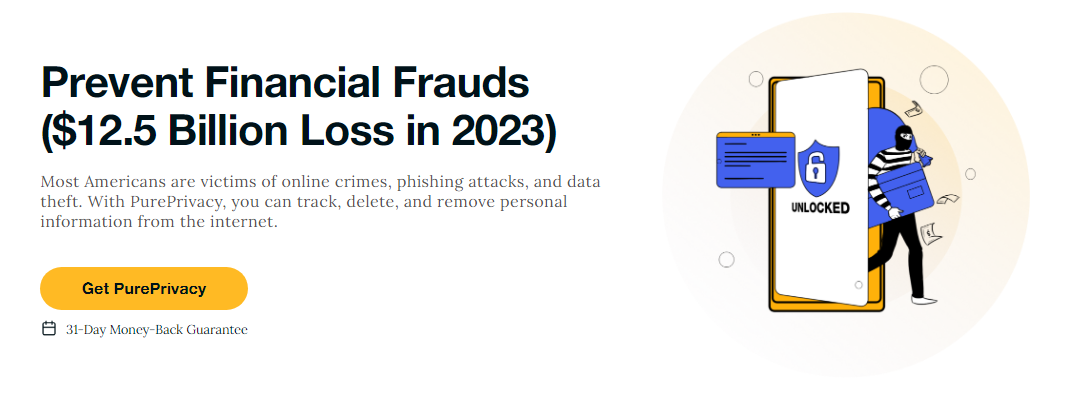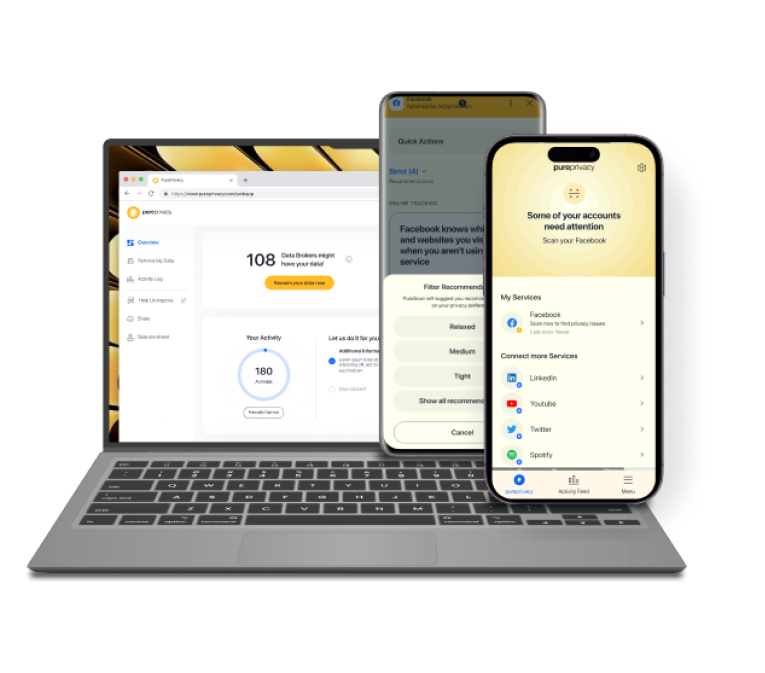Table of Content
In a shocking revelation, cybersecurity researchers identified the 'Mother of all Breaches,' with over 26 billion personal details exposed. This data leak, which is possibly the biggest ever documented, has affected a variety of services, including Twitter, LinkedIn, and Dropbox.
Understanding the implications of this breach is critical, as it could lead to identity theft, recruitment fraud, and other unwanted activity. Let's get into the details and see how you can protect your online presence following this cyber attack.
What Happened in the LinkedIn Data Breach?
In January, a massive data breach happened called MOAB because it affected 26 billion records divided into 3,800 folders, each representing a different data breach.
While this does not imply that the difference between the two automatically translates to previously unpublished material, billions of new records indicate a strong possibility that the MOAB contains never-before-seen information.
Warning As 26 Billion Records Leak: Dropbox, LinkedIn, Twitter Namedhttps://t.co/Ph5ti31rzp
— Ravi Karkara (@ravikarkara) January 24, 2024
Security researchers have warned that a database containing no less than 26 billion leaked data records has been discovered.
The supermassive data leak, or mother of all breaches as… pic.twitter.com/M8jz71v7wL
Researchers believe the MOAB's owner has a vested interest in holding enormous volumes of data and hence potentially a malicious actor, data broker, or a service that handles massive amounts of data.
However, there are reportedly hundreds of millions of records from the following:
- Weibo (504 million)
- MySpace (360 million)
- Twitter (281 million)
- Deezer (258 million)
And many others that have been victims of data breaches or ransomware attacks.
Even LinkedIn, with 251 million records, wasn't able to secure its data from cybercriminals.
What was the Impact on LinkedIn Customers?
The Mother of All Breaches had a major impact on members of LinkedIn.
The major data breach jeopardized millions of user accounts, revealing personal information such as email addresses, phone numbers, and passwords.
This resulted in a surge of phishing attacks, identity theft, and other cybercrimes.
Cyber Security Researchers Claimed the Enormous Effect of MOAB on Consumers
The research team estimates that the 12 terabytes database discovered on an open storage server was created by a cyber attacker.
They stated:
“Threat actors could leverage the aggregated data for a wide range of attacks, including identity theft, sophisticated phishing schemes, targeted cyberattacks, and unauthorized access to personal and sensitive accounts.”
The team believes that the supermassive MOAB could have a remarkable consumer impact.
Because many users reuse usernames and passwords, hackers might launch a wave of credential-stuffing attacks.
The researchers stated:
“If users use the same passwords for their Netflix account as they do for their Gmail account, attackers can use this to pivot towards other, more sensitive accounts. Apart from that, users whose data has been included in supermassive MOAB may become victims of spear-phishing attacks or receive high levels of spam emails.”
What are the Potential Privacy Risks from Exposed Data?
Data breaches have serious consequences on both companies and users.
They can cause financial losses, reputational damage, legal problems, fines, and a loss of trust. Despite better security measures, hackers find new ways to compromise data.
Here are some of the privacy risks associated with data breaches:
Phishing and Pretexting
Hackers use false emails or messages to lure people into disclosing important information.

Unpatched Vulnerabilities
Unauthorized equipment used by shadow IT employees can potentially expose sensitive information.
Ransomware Attacks
Attackers encrypt sensitive information and demand a ransom for decryption. If the ransom is not paid, the stolen data could be disclosed or sold.
Data Exfiltration
Data exfiltration can occur when attackers steal important information such as intellectual property or client data.
How to Take Immediate Action in Case of a Data Breach
A data leak can create a tragedy. However, with the correct precautions, you can limit the damage and recover rapidly.
Let's see what these actions are.
Isolate-Impacted Systems
Disconnect infected devices from the network to prevent additional data loss.
Monitor Account Activity
Monitor your accounts network traffic regularly for evidence of unauthorized access.
Regulatory Authorities
Report the breach to the appropriate government agencies.
Implement Stronger Security Measures
Improve safety measures to help prevent such breaches.
Protect Your Data from Hackers and Scammers With PurePrivacy
PurePrivacy is a comprehensive online privacy and security solution that protects your online activity from multiple online threats:
- Dark Web Monitoring: Stay ahead of data breaches and protect your identity.
- Tracker Blocker: Stop invasive tracking and safeguard your privacy.
- Remove My Data: Eliminate your digital footprint and reduce identity theft risks.
- Social Privacy Manager: Take control of your social media privacy settings.

ross multiple social media platforms, ensuring that your personal information remains safe from prying eyes.
Frequently Asked Questions (FAQs)
-
How can I protect my LinkedIn account?

You should create a strong, unique password, enable two-factor authentication, be aware of phishing emails and frauds and limit the information you make public on your profile.
-
Should I update my LinkedIn password?

If you're concerned about the security of your LinkedIn account, it's a good idea to change your password frequently.
-
What should I do if I suspect that my LinkedIn account has been compromised?

If you observe any strange activity on your account, contact LinkedIn support right once and change your password.
-
What should I do if I get a phishing email claiming to be from LinkedIn?

Never click links or open attachments in questionable emails. Instead, report the email to LinkedIn and delete it.
In Conclusion!
The LinkedIn data breach highlights the susceptibility of even the most renowned online services to cybercriminals.
To limit the impact of such breaches and secure personal data, users can consider implementing complete online security procedures, such as using PurePrivacy.
PurePrivacy with a VPN blocks unwanted access, making it more difficult for hackers to deceive and use sensitive data.





